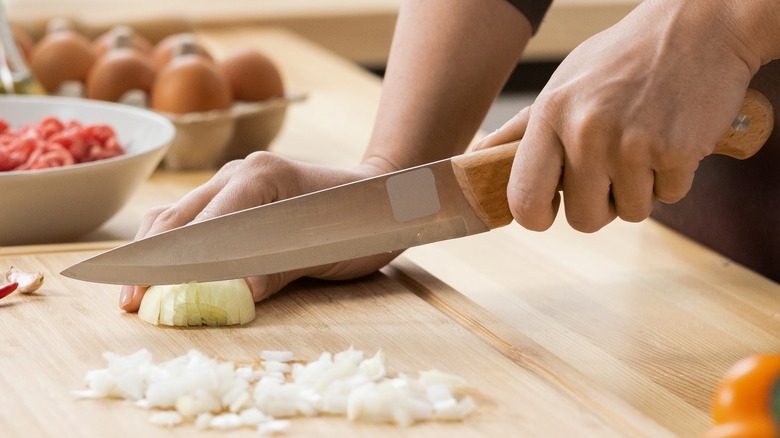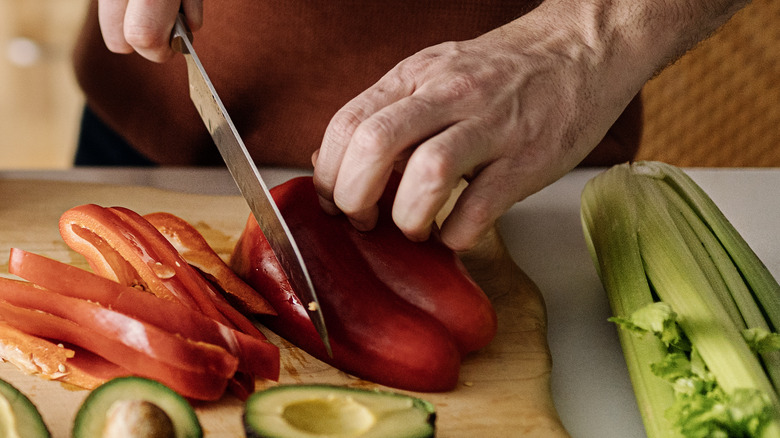Here's Exactly What To Do With Your Other Hand While Chopping
Learning how to correctly wield a chef's knife is only half the battle when it comes to chopping. Beyond positioning your dominant hand along the handle of a knife, you might wonder what the other hand should be doing. This non-knife-holding hand, also referred to as your guiding hand, has an equally important role in the chopping process. Helping maintain safety, there is a proper way to position this other hand as you chop, slice, and dice. While your first instinct might be to hold ingredients so that fingertips are left exposed, a quick-moving blade will likely nick this exposed skin.
Instead, rethink the position of your other hand and employ the claw grip. A method where the fingertips of your guiding hand are tucked inward and away from the blade, the aptly named position mimics the shape of an animal's arched claw. Simply place your fingertips and thumb at an angle of 90 degrees on an ingredient, curling towards your palm so that your nails act as a guard against the moving blade. With this technique, the risk of injury is greatly minimized as the pads of your fingers are protected by the hard exterior of your nail. But, that's not all your spare hand should be doing.
Perfecting the claw grip
Although the claw ensures a high degree of safety and stability, there are some other things to keep in mind as you work to master the technique. For example, the knife's blade should always rest against the knuckle as you slice to guide the path of the blade and prevent any mishaps. Whether it leans against the knuckle of your index finger or against the knuckle of a slightly extended (but, still curled) middle finger is based on whatever feels more comfortable to you.
In terms of increasing stability, it's wise to place all ingredients cut-side down on a chopping block to limit any wobbling. Additionally, if you're dealing with a particularly petite ingredient that might be more susceptible to slipping from under your grasp, feel free to lean the wrist of your non-guiding hand on the board, as well. Just don't forget that whatever you chop, your "clawed" hand should be slowly creeping backward with each slice.
Despite all these helpful tips, becoming confident with your claw-and-chop technique is ultimately a matter of practicing. Working with softer vegetables and slowly progressing to denser ingredients is a great way to gain confidence at your own pace, however, if you're still nervous about accidentally cutting yourself, then it might be time to consider investing in a pair of cut-resistant gloves. At the end of the day, ensuring your safety is what's most important.

